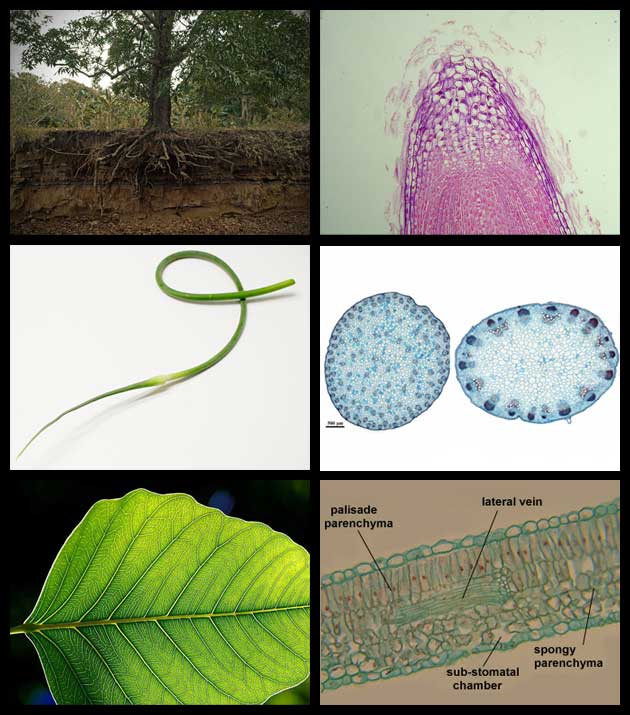

Root cells are specialized plant cells that absorb dissolved minerals and water from the ground. Root cells grow in long lengths called root hairs, in order to increase the surface area of the root system. This also helps anchor the plant. Since root cells grow underground, you would not expect to find chloroplasts in these cells since the purpose of chloroplasts is to absorb energy from the sun. The tip of the root also has specialized cells and is called the root cap. These cells discharge a slippery substance that allows them to burrow down into the soil more easily.
Not to be confused with the type of embryonic stem cells that can differentiate, the stem cells of plants are specialized cells that transport water, nutrients, and the products of photosynthesis throughout the plant. They connect the photosynthesis factories in the leaves with the storage site in the roots. Xylem cells transport water from the roots in the upward direction. Phloem cells transport nutrients in both directions to reach all parts of the plant. Some plants have specialized stem cells that form the wood to support the plant.
The cells found in the leaves of plants are highly specialized and there are many different types. Palisade cells are column-shaped and are found near the surface of the leaf. They are full of chloroplasts ready to capture radiant energy from the sun and turn it into chemical energy. Along the bottom of the leaf, guard cells open and close to allow the transfer of gases with the atmosphere as well as the transpiration of water. These cells can help protect the plant from drying out.